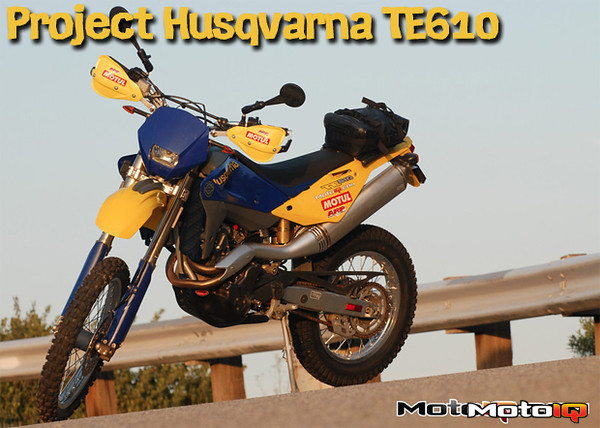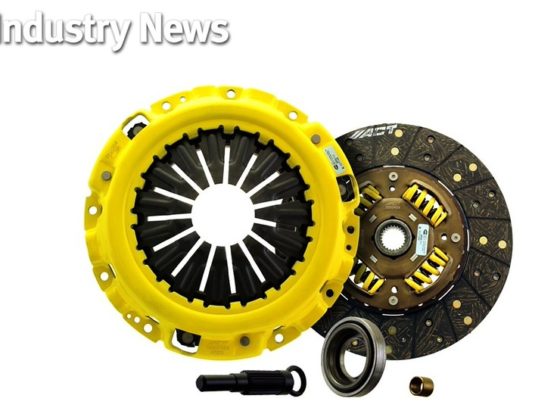,
I measured the self-tapping screws included with the Cycra bar pack to hold the plastic shields to the bar and realized there would be only a few thousandths of an inch thread engagement each side. The holes provided in the bars are closest to the tap drill size for 12-24 screws, so I tapped them and bought larger screws.
Putting the Cycras on before hitting dirt was smart. After hitting the ground, I've had to loosen all the bolts and realign one of them, no big deal. If it hadn't been there, there's no question I'd have been waiting two weeks for the Husqvarna dealer to get a new lever in, and it wouldn't be $6 like a YZ250 lever. Riding 30 miles back to the truck with no clutch would not have been fun, either.
There was still some Husky stuff to fix, too.
 |
| The banjo fitting on the master cylinder end of the brake line was installed at an angle that put a twist in the hose when the master was installed on the bar – the choice was 100+ degrees or 80- degrees off. |
Twist in stainless steel braided hoses tensions the braid in one direction and loosens it in the other, dramatically reducing its strength. Techna-Fit Fluid Transfer Systems whipped up a replacement line with a –3 straight female fitting at the master cylinder end. It connects to the master with a banjo to –3 male adapter so the line can be connected with zero twist, regardless of the master's angle. This setup re-used the original armor for the part of the hose in front of the fork leg and looks identical to stock.
 |  |
| Before OCD. | After OCD. |
The stainless steel ferrule on the end of the clutch cable housing is 0.300 in. diameter, but the inside of the adjuster it sits in is 0.360 in. diameter, allowing the cable housing to operate at a substantial angle. This angle places a sharp bend in the cable, then moves that bend back and forth every time the clutch is used, causing the cable to fray and break.
 |  |
| I made a spacer ferrule from aluminum with a slot in the side, so I didn't have to disassemble the whole clutch cable to install it. It's 0.300 in. ID, 0.360 in. OD, 0.420 deep on the inside and 0.500 long. | I also smoothed the exit of the adjuster sleeve where the cable heads toward the lever to reduce abrasion there. |
Hit everything with a good waterproof grease when reassembling and don't forget to readjust clutch play for the additional housing length.
Before, I could feel the strands of the cable rubbing past edges as roughness in the clutch pull, but with the housing end held in line with the adjuster, it is now perfectly smooth and the effort seems lower than many hydraulic clutches I try.
Mirrors
The stock Husky mirrors work well enough on the street, but an off-road bike should have folding mirrors to prevent breakage. Even more importantly, rigid mirrors can seriously injure a rider going over the handlebars. One quickly learns that most folding mirrors are consumables. Ned Suesse got tired of replacing them and created the Doubletake mirror.
 |
| The Doubletake mirror is a glass fiber-filled Zytel housing with a convex glass lens that balances an expanded field of view against making everything too small to see. The mirror portion has a 1-in round ball on the end, which integrates with a RAM Mount arm and 1-in rubber ball threaded into the bike's mirror mounts. I chose the longer, 3-in RAM arm to help get the mirrors outside my shoulders. A twist of the knob loosens the arm to fold the mirror out of the way or lock it in position. Ned recently used his mirrors in the 2012 Dakar Rally, which he finished, a sure test of any product's durability. |
Though the Doubletake mirror and hardware are bulkier, the materials are less dense and the complete assemblies weigh almost exactly the same as the stock mirrors.
I found, as some others have, that while the mirrors do stay put at highway speeds and on dirt roads, the hard plastic of the mirror doesn't provide much friciton for the RAM arms to grip. A layer of Plasti-Dip ($7/can at your local mega-box hardware store) on the mirror balls fixed it right up for me, and I'm able to ride rough trails and still check for my buddy behind me.
On the right side, I needed a riser between the master cylinder clamp and the RAM ball to prevent the RAM arm interfering with the throttle cables. A search for “Yamaha mirror adapter” on a popular auction site yielded $8 for a pair shipped from Taiwan – non-intuitive, since the Yamaha adapters change from LH to RH threads. For this, you just want RH-to-RH M10x1.25 threads.



